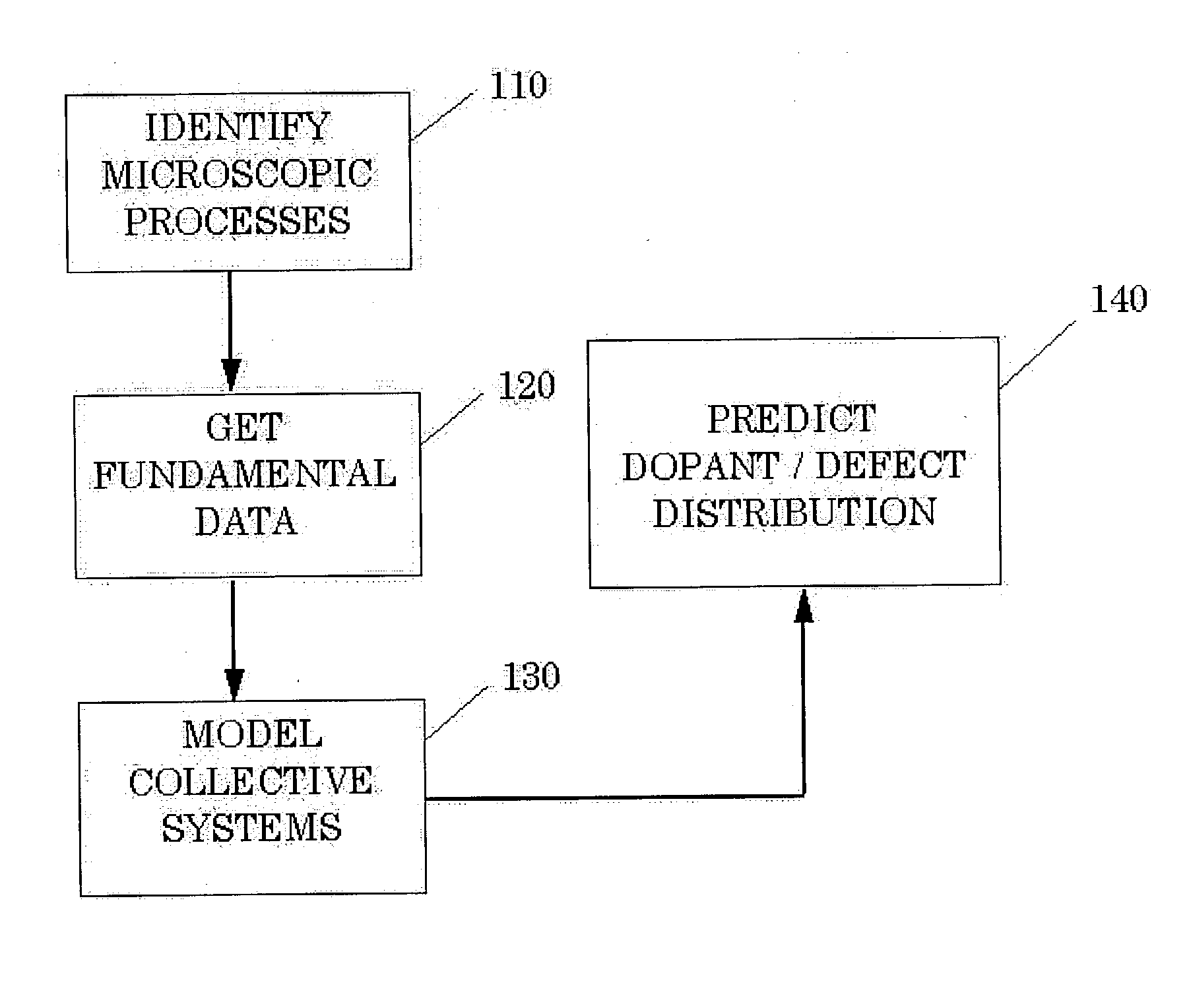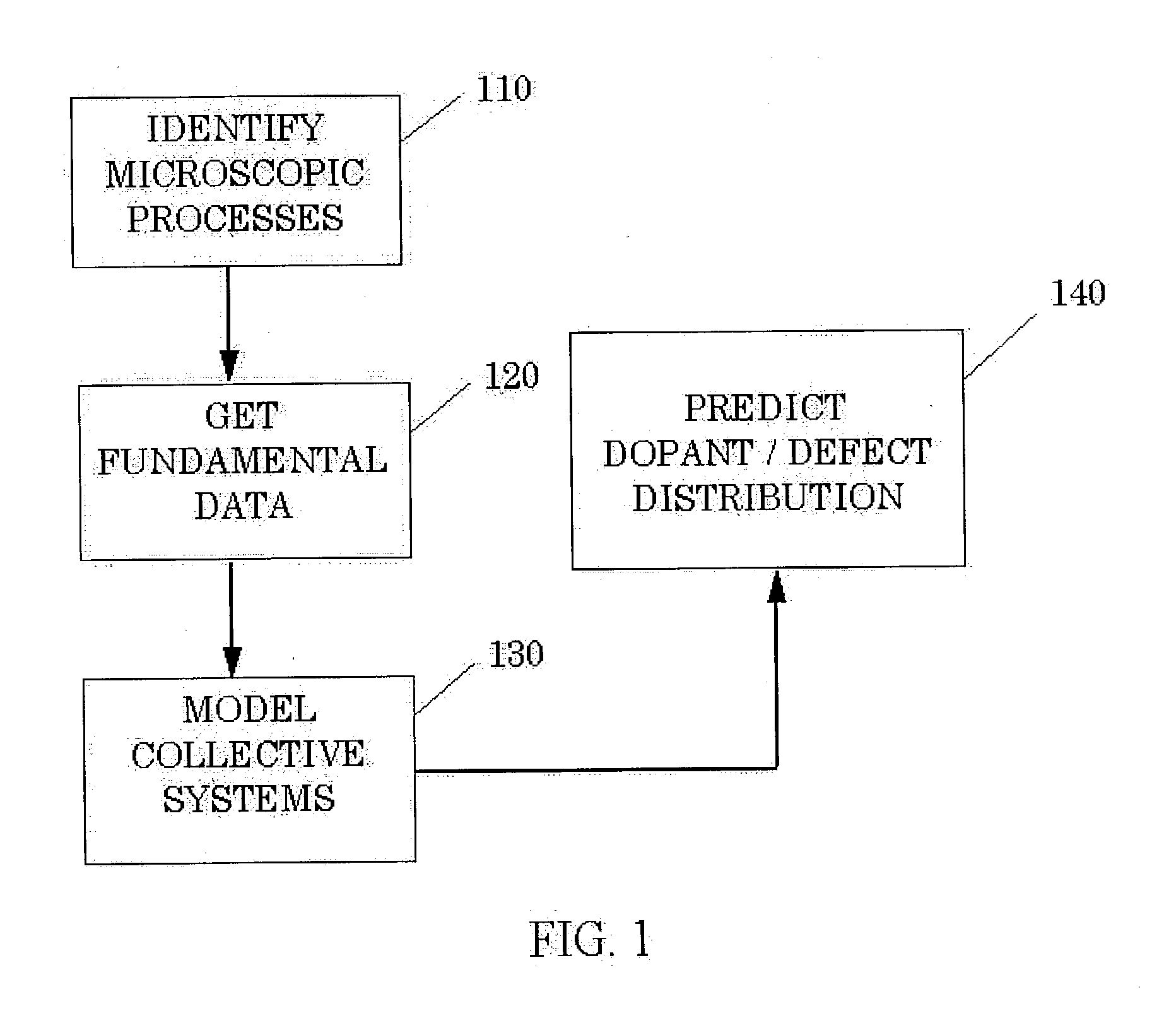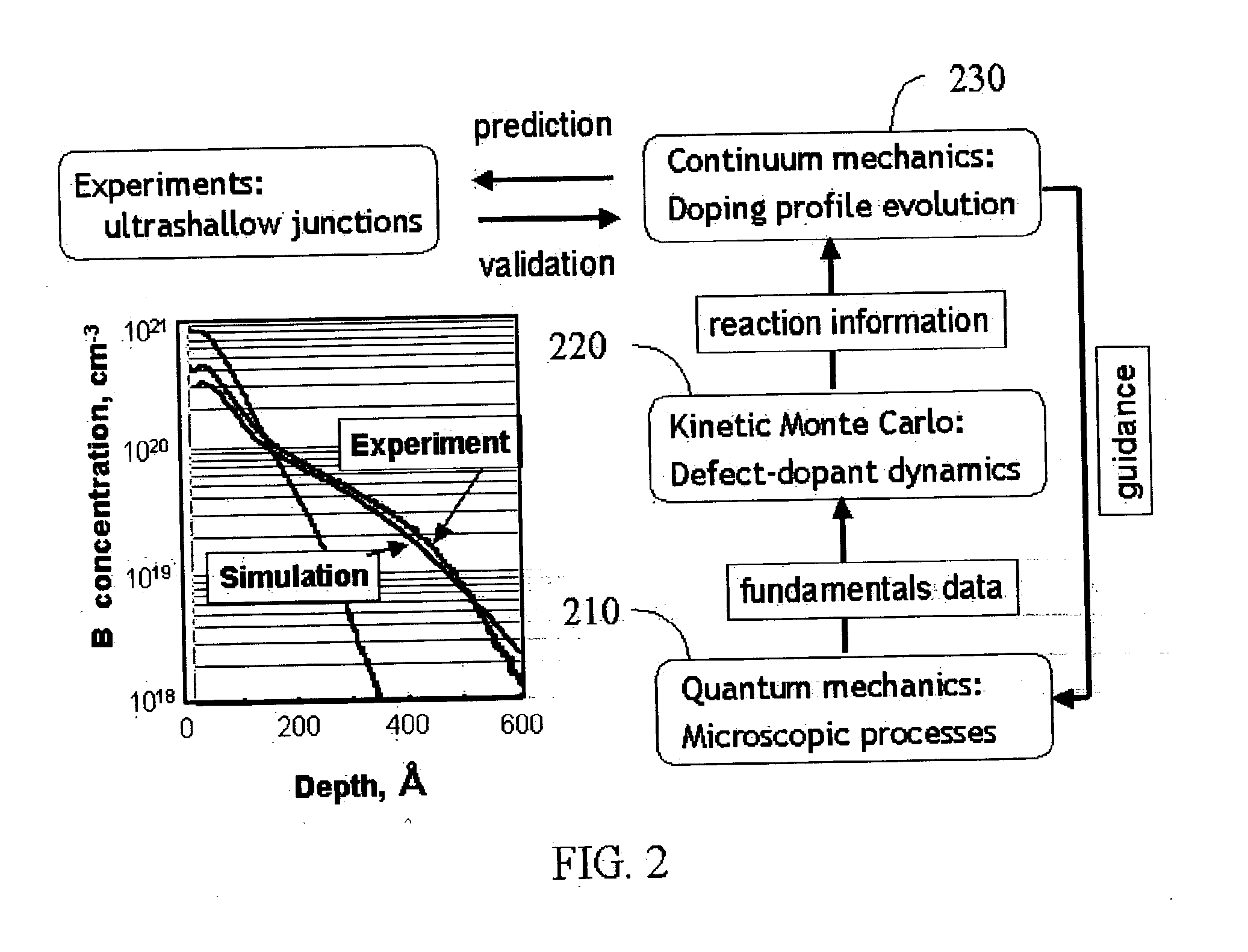Method for predicting the behavior of dopant and defect components
a technology of defect and component, applied in stochastic cad, instruments, under protective fluid, etc., can solve problems such as kink or non-optimum distribution of boron, degrade performance, and many parts of boron may not have the proper electrical activity, and achieve the effect of higher performance in electronic devices
- Summary
- Abstract
- Description
- Claims
- Application Information
AI Technical Summary
Benefits of technology
Problems solved by technology
Method used
Image
Examples
example
The following example considers the possible distributions of boron, silicon, and vacancies at various substitutional and interstitial sites, including clusters of several atoms and / or defects at any one site. The application of multiscale modeling for ultra shallow junction processing is summarized in FIG. 2.
We first used quantum mechanics calculations 210 to model the relevant microscopic processes. All atomic structures were optimized using the local density approximation (LDA) to density functional theory (DFT), as implemented in the CPMD V3.3 package. Calculation of the energetics of the LDA structures using the generalized gradient approximation (GGA) gave similar-results. We used a non-local, norm-conserving pseudopotential and a plane-wave cutoff energy of 20 Ry. The defect systems considered were modeled using a 192-atom supercell with a fixed volume that yields a Si—Si bond distance of 2.35 Å in pure silicon. All atomic positions were allowed to relax fully until all re...
embodiment 1
FIG. 4 shows the first example. In this example, boron atoms were implanted on a silicon wafer by implantation energy of 1 keV, and the wafer was annealed for 10 seconds at 1000° C. In this calculation, Eb,BsI was set to be 0.75 eV. The distributions of Bs, BsBi, BsBiI2, Bs2Bi, Bs2Bi2, Bs3Bi, and In were calculated by solving the first relationship, Eq. (1), throughout the simulation, and the distributions of I, BsBiI, BsBi2 and BsBi3 were calculated by solving the second relationship, Eq. (5), throughout the simulation. On the other hand, the distribution of BsI was calculated by solving the first relationship in the time period of t≦0.1 μsec, and by solving the second relationship in the time period of t>0.1 μsec. The distributions of BsI2 and BsI3 were calculated by solving the first relationship in the time period of t≦0.1 msec, and by solving the second relationship in the time period of t>0.1 msec. Finally, the doping profile of boron was obtained by summing up the concentrati...
embodiment 2
FIG. 5 shows the second example. In this example, boron atoms were implanted on a silicon wafer by implantation energy of 500 eV, and the wafer was annealed for 10 seconds at 1000° C. In this calculation, Eb,BsI was set to be 0.65 eV. The doping profile of boron was calculated in the same way as that used in Embodiment 1. Experimental data obtained using SIMS measurement is also shown in FIG. 5. Calculated result is in good agreement with experiment.
PUM
 Login to View More
Login to View More Abstract
Description
Claims
Application Information
 Login to View More
Login to View More - R&D
- Intellectual Property
- Life Sciences
- Materials
- Tech Scout
- Unparalleled Data Quality
- Higher Quality Content
- 60% Fewer Hallucinations
Browse by: Latest US Patents, China's latest patents, Technical Efficacy Thesaurus, Application Domain, Technology Topic, Popular Technical Reports.
© 2025 PatSnap. All rights reserved.Legal|Privacy policy|Modern Slavery Act Transparency Statement|Sitemap|About US| Contact US: help@patsnap.com



